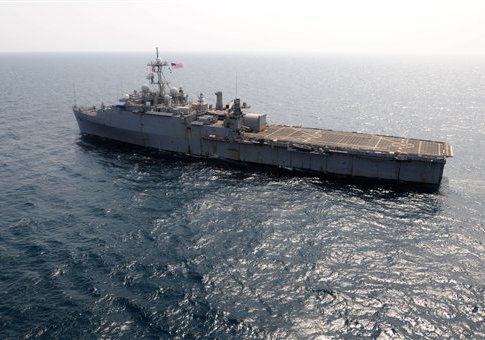The U.S. Navy is suffering from an inability to deploy ships to key international conflict zones due to rising maintenance issues on an aging fleet, that is increasingly being sidelined for lengthy repairs, according to military experts and a new government investigation.
Heavy demand on the Navy’s fleet during the past decade has compromised the operational conditions of many ships, forcing military leaders to sideline these vessels for lengthy repairs that experts say will severely limit the Navy’s ability to respond to emerging threats in the Persian Gulf and Asia-Pacific regions.
Critical maintenance was completed on time on just 11 percent of the Navy’s aircraft carriers in 2015, causing these vessels to lose around 181 deployment days, according to the latest projections by the Government Accountability Office.
The situation is worse for surface combatant ships. Maintenance on these vessels was completed on time in just 28 percent of cases, causing the fleet to lose around 391 total deployment days, according to the GAO latest report.
Military experts told the Washington Free Beacon that the "Navy crunch" is not expected to end anytime soon, raising questions about the United States’ ability to respond on multiple fronts in key conflict zones.
"Adm. Michelle Howard testified this year that only one of the three required Carrier Strike Groups are ready to deploy within a month," Mackenzie Eaglen, a longtime defense adviser and expert in military readiness, told the Free Beacon.
"In an effort to eventually shorten tour lengths and address a growing maintenance backlog, Navy leaders have chosen to take risks in their ability to respond to events immediately in either the Persian Gulf or the Western Pacific—likely the latter given the fight against ISIS," said Eaglen, a resident fellow at the American Enterprise Institute’s Marilyn Ware Center for Security Studies.
Eaglen predicted that this shortfall could continue for at least the next five years as the Navy moves to repair its fleet and eventually redeploy it.
Navy training, deployment, and sustainment have been compromised as a result of longer deployments and less maintenance.
To get the fleet back on track, the Navy has implemented a series of reforms that will decrease deployment availabilities for the next several years.
"Extended maintenance availabilities and schedule overruns compress the time available for training, deployment, and sustainment, thereby jeopardizing the Navy’s ability to meet its goals in these areas," the GAO said in its latest report.
In one instance, "the 2015 planned maintenance availability for the USS George H. W. Bush (CVN 77) exceeded its six-month availability by more than two months," the investigation found. "To accommodate the increase, the Navy reduced the ship’s employability to operational commanders by three weeks and compressed its scheduled training by five weeks."
As of January 2016, only 15 of the 83 cruisers and destroyers had completed their new maintenance regimen, according to the report. None of the U.S. aircraft carriers have done so.
"Simply put," Eaglen said, "the new fleet response plan made a hard tradeoff of less carrier presence in the near-term. This won’t be fixed until CVN-78 USS Ford is commissioned, possibly as early as 2019 or as late as 2021, when the U.S. will return to a true 11-carrier Navy."
The will impact the United States’ global footprint and ability to respond militarily during the next several years.
"It goes to show that there are no more deferrals, passes, or easy choices left for policymakers who simply demand more of the force while providing less," Eaglen said.
The GAO predicts that the Navy could easily fail to meet its goals under the reform plan.
If the Navy’s budget decreases or if maintenance is not completed on time, the plan could fail, according to the GAO.
The report further determined that "the public and private shipyards involved in Navy ship maintenance face a number of challenges in completing maintenance on time, including unanticipated work requirements, workforce inexperience, and workload fluctuations," according to the report.
Additionally, "the Navy has been struggling to accurately define ship maintenance requirements, a step that is key to completing maintenance on time," the report states.
